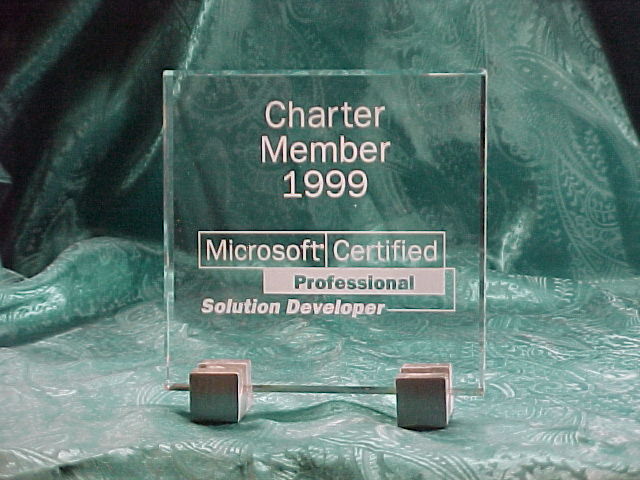In 1999, I received this award, a Charter Member of the Microsoft Certified Solution Developer. I worked quite hard to earn the award. I was in the first round of MCSDs using Visual FoxPro as their primary language. (It did help a little that I was one of two Lead Authors on the Visual FoxPro Distributed exam. A little. I still had to pass the test!) I had worked towards the MCSD for some time, as Microsoft moved the goalposts and required that I first pass two Windows Operating System and Services Architecture (WOSSA) exams, which I did in 1995, then Windows Architecture I and II, which I did in 1998, and finally, the two “Designing and Implementing Desktop/Distributed Applications with Microsoft FoxPro 6.0” exams in February of 2000. Along the way, I passed a total of seventeen examinations, including Visual Foxpro 3 and sufficient Windows NT exams to earn the Microsoft Certified Systems Engineer (MCSE) for NT 4.0 in May of 1999.
I was, and still am, convinced that software development needs to reach the point where developers can prove their competence at some level. Many organizations have tried to establish such standards, with none succeeding so far. In an industry moving as fast as ours, competence is a difficult standing to define. Vendor-sponsored and -specific certifications obviously fall far short of that standard: the vendor has an ingrained conflict of interest in defining proficiency with their products as proficiency in the field. The numbers of certified individuals are touted by vendors as a sign of credibility in their products. None the less, other industries such as medicine and engineering have found a way to establish professional bodies of licensure and I believe software development will benefit from the same.
